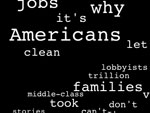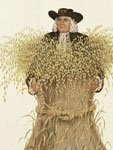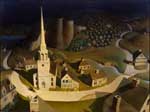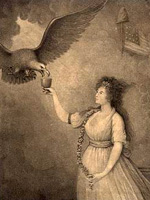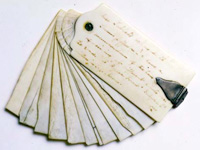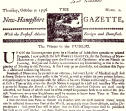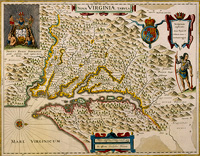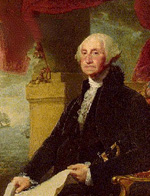Teaser
Did you know the Quakers were pre-Revolution abolitionists?...
Description
While many Quakers owned slaves prior to the American Revolution, the Quakers passed a rule in 1758 forbidding their members to buy or sell slaves. This lesson examines how the Quakers' religious views influenced their opposition to slavery during the Revolutionary period. We like that students are asked to analyze a series of primary sources to identify the reasoning behind the Quaker's anti-slavery stance.
Article Body
The lesson plan suggests that teachers begin by delivering a lecture based on an online talk by historian Jean Soderlund. (Adobe Flash Player and Acrobat Reader are required to access the lecture). However, the historian’s lecture is brief, informative, and fairly engaging, so teachers may want to consider playing the lecture for students.
Next, students are asked to read a set of documents written by Quakers in the 18th century, and identify the various reasons Quakers were opposed to slavery. The documents are rich and informative. However, the language is challenging; and teachers may need to modify and shorten the documents, and create guiding questions to help students analyze them.
For an assessment, middle school students create protest pamphlets expressing the reasons behind Quaker opposition to slavery. High school students analyze the Declaration of Independence from the Quaker perspective. High school teachers may want to consider having students also analyze the original draft of the Declaration of Independence which had much stronger language opposing slavery. The original draft of the Declaration of Independence reflects more of Jefferson’s personal views, while the final version reflects more of the consensus view of congress.
Topic
Quaker opposition to slavery during the Revolution
Time Estimate
1-2 days, 90 minutes total
Rubric_Content_Accurate_Scholarship
Rubric_Content_Historical_Background
Yes
The plan provides a brief historical overview and a historian's lecture.
Rubric_Content_Read_Write
Yes
Students must read primary sources and respond with a written assessment.
Rubric_Analytical_Construct_Interpretations
Yes
Students read several primary documents to determine the reasons behind Quaker opposition to slavery in the 18th century.
Rubric_Analytical_Close_Reading_Sourcing
Rubric_Scaffolding_Appropriate
No
The language of the documents may have to be modified—especially for middle school students.
Rubric_Scaffolding_Supports_Historical_Thinking
No
Teachers should consider providing students with a few focusing questions for each document.
Rubric_Structure_Assessment
Yes
There are different assessments for the high school and middle school level. However, no rubrics or specific assessment criteria are included.
Rubric_Structure_Realistic
Rubric_Structure_Learning_Goals
Yes
A sleek lesson that could be done in one or two class periods.
